In the ever-changing world of data communications, there has never been a greater need for fast and reliable interconnect solutions. To achieve this, OSFP (Octal Small Form-Factor Pluggable) cable assemblies take center stage – an unprecedented method of data transfer that outperforms all other alternatives by far. This article will go into detail about what makes up an OSFP cable assembly from a technical standpoint while also considering its design, functionality, and application in today’s networking environments. Our goal is to help readers see how these units promote increased throughput and efficiency within data centers and telecommunication networks by looking at key features plus benefits associated with OSFP technology. It doesn’t matter if you’re someone who works in the field or just loves gadgets; through this journey into super-fast connections, we hope to share some idea about what tomorrow holds for us in terms of rapidity!
What is an OSFP Cable, and How Does It Differ from Other Cables?
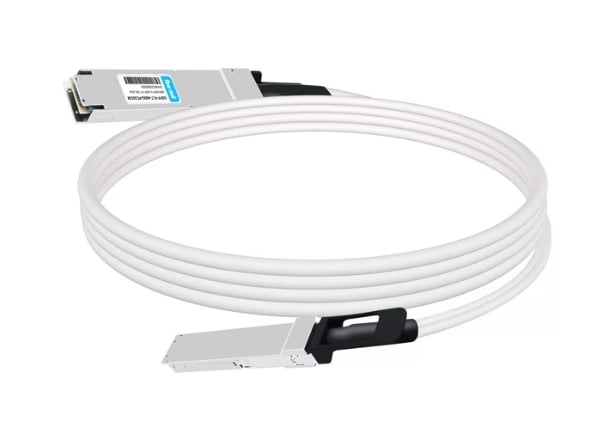
Overview of OSFP Cables
Every single OSFP cable is manufactured to back up high-bandwidth applications. With eight electrical lanes in each, they can transmit data at 25 Gbps speed which makes it possible for them to reach an aggregate bandwidth of 400 Gbps. For this purpose, it comes in a small size that fits well into the limited spaces available within data centers. Unlike SFP or QSFP cables, which have fewer lanes and support lower data rates, these ones are designed to provide higher data density and better thermal management properties. Such enhanced abilities enable them to cater to the needs of 400G Ethernet, among other new standards for transmitting information, thus making them indispensable components for use in future networks’ infrastructure design and architecture forms.
Key Features of OSFP Cable Assemblies
OSFP cables are created with some originality to be more useful and flexible in high-speed networking environments. Here are some of their main features:
- Capability for High Bandwidth: Each OSFP cable assembly can handle up to 400 Gbps which is ideal for data-intensive applications like cloud computing or high-frequency trading among others. It achieves this through eight electrical lanes, each capable of 25 Gbps.
- Compact Form Factor: The design of OSFP connectors enables them to have a smaller footprint when compared to traditional cable assemblies hence saving on space especially in rack-mount equipment within data centers.
- Better Thermal Management: OSFP assemblies have advanced thermal management practices that ensure they work at their best even during extreme transfers of data by keeping them within the right operating temperatures, thus making them reliable.
- Configurations Flexibility: Different lengths and configurations exist for OSFP assemblies so as not to limit one’s choice depending on distance requirements or installation scenarios in various network architectures.
- Backward Compatibility: These cable assemblies were made compatible with already existing systems, which makes it easier for users who may want to upgrade from lower speed standards while still enjoying benefits associated with faster connections.
- Sturdy Build Quality: Materials used in making these cables are strong enough such that they can withstand harsh conditions such as electrical interference and mechanical stress among others thereby ensuring that they work well over a long period.
The inclusion of these attributes enables OSFP cable assemblies to support higher data rates demanded by emerging technologies within modern telecommunication and data center environments driven by performance-based applications.
Comparison Between OSFP and Other Cable Types
There are a number of key differences between OSFP (Octal Small Form-factor Pluggable) and other cable types like QSFP (Quad Small Form-factor Pluggable) or CXP (10x Small Form-factor Pluggable). Here are some comparisons:
- Data Rate Capacity: OSFP is designed for higher data rates, which can go up to 400 Gbps commonly used in the latest high-frequency trading and data-intensive applications. This is unlike QSFP where it only supports 40 Gbps or 100 Gbps normally while CXP may support 120 Gbps but lacks scalability as compared with OSFP.
- Physical Size and Density: With minimal space requirements, an OSFP connector allows more ports per unit area within a data center than conventional connectors. Though also compact in size, QSFP does not achieve such density levels as those enabled by OSFP – this feature being particularly useful in space-constrained environments.
- Power Consumption and Thermal Management: The assemblies of OSFP involve sophisticated methods of managing heat; hence, they can operate efficiently at high speeds. While thermal management is implemented for both QSFP or CXP when dealing with heat dissipation from the devices during operation, typically, such assemblies do not exhibit the same level of efficiency as seen in many cases of OSFPA where demands are higher operationally demanding conditions.
- Backward Compatibility: Both backward compatibility with existing systems is offered by both OSFP and QSFP thus making it possible for data centers to upgrade gradually. However, CXP’s compatibility though available is less extensive than that provided by either OSFPA or QSFPA.
These comparisons demonstrate the superior performance, density and reliability benefits of OSPFA over other technologies, hence making them suitable for use in modern telecommunications systems and data centers.
How Do OSFP Cables Support 400G Data Transfer?
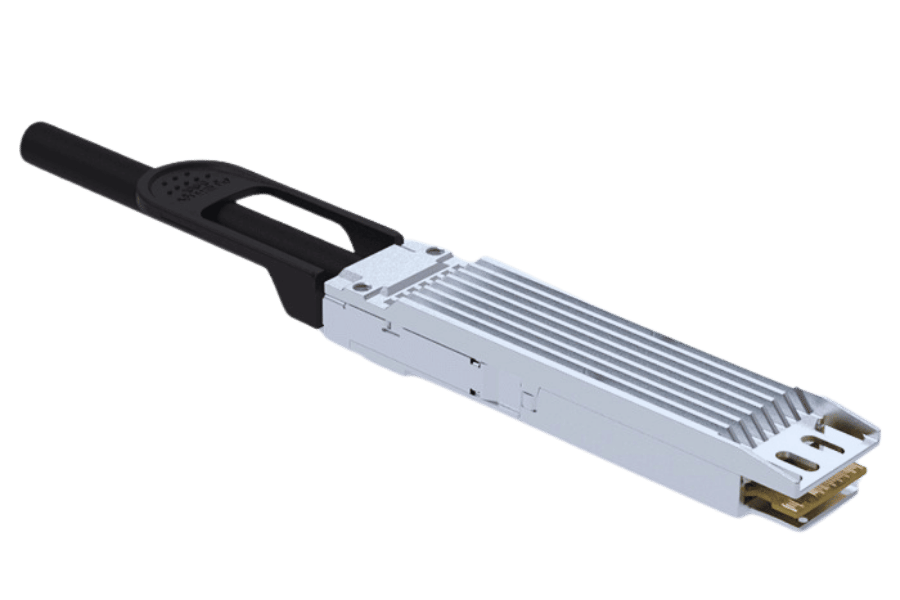
Exploring 400G Capabilities with OSFP
OSFP (Octal Small Form-factor Pluggable) technology has the ability to transfer data at speeds of up to 400 gigabits per second by utilizing eight lanes in parallel with a capacity to transmit 50 Gbps each. This arrangement not only improves overall bandwidth but also ensures compactness, thereby optimizing space utilization in data centers. OSFP also boasts an elaborate system for managing heat which guarantees stability during intense operational periods while at the same time reducing signal loss and increasing dependability. Moreover, its features that allow backward compatibility make it possible to integrate into existent networking configurations without causing any disruptions, as well as provide room for step-by-step upgrades in technology. Consequently, OSFP becomes a strong alternative for institutions seeking fast communication of information across various places with diverse requirements.
Understanding PAM4 and Its Role in OSFP
Pulse Amplitude Modulation – 4 (PAM4) is a significant technology used in OSFP (Octal Small Form-factor Pluggable) assemblies in order to increase their data transfer capacity. By sending two bits of information per symbol instead of one, PAM4 effectively doubles the transmission throughput within the same spectrum. This means that OSFP can achieve data rates up to 400Gbps over existing infrastructure. Moreover, PAM-4’s ability to preserve signal quality at greater distances becomes critical for high-speed data centers where distance and signal quality matter most. Therefore, implementation of PAM four-level signaling into OSFP systems greatly contributes towards higher performance, thus allowing operators of such facilities to meet ever-growing bandwidth needs in contemporary network environments.
Why 400G OSFP is Vital for Modern Data Centers
The proliferation of apps and services that rely on data calls for greater data center bandwidth. This need is met by 400G OSFP (Octal Small Form-factor Pluggable) technology, which can be scaled to handle the increased demand. When considered from a business standpoint, deploying this technology allows larger volumes of traffic to flow through data centers while minimizing the physical connections needed, as concluded in some market research reports. Not only does this reduce network complexity, but it also improves operational efficiency within these facilities. Additionally, cloud computing platforms, artificial intelligence infrastructures, and machine learning systems, among other applications, require fast processing speeds combined with rapid information transfer rates; therefore, they heavily rely on high-throughput-low-latency modules like those provided by 400G OSFPs. Moreover, organizations can upgrade their bandwidth capacities without necessarily buying new hardware or making significant changes thanks to backward compatibility with existing infrastructure demonstrated by OSFP models, thus ensuring smooth transitions occur where necessary. In a nutshell, it is clear that 400G OSFP technologies are vital for any modern data center seeking competitiveness vis-à-vis future needs.
What Are the Different Types of OSFP Cables Available?
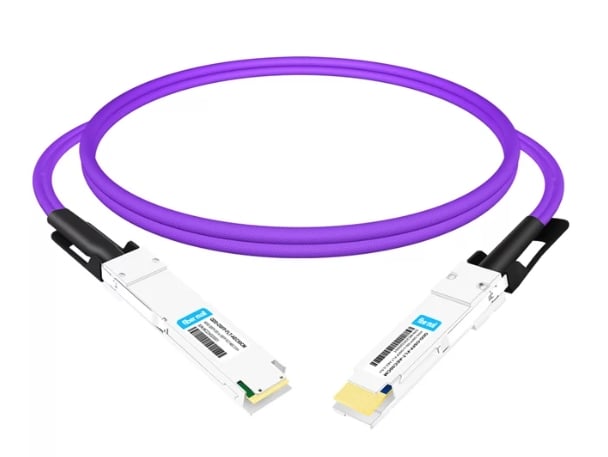
OSFP to OSFP Direct Attach Copper (DAC) Cables
The OSFP to OSFP Direct Attach Copper (DAC) cables are interconnection solutions created for communicating data within data centers over short distances at high speeds. These wires apply copper and come in different lengths, commonly between 0.5 meters and 7 meters, to offer a cheaper option compared to fiber optic connections. They have the capacity to support data rates that reach up to 400G while consuming less power, thus making them perfect for densely populated network areas. Installation of DAC cables is easy, and they provide a reliable method of connecting OSFP transceivers directly, hence ensuring that signal loss and latency are minimized when dealing with intra-rack or inter-rack configurations.
Passive Direct Attach Copper Cable Assemblies
Passive Direct Attach Copper (DAC) cable assemblies are an efficient high-speed data transmission connection between network devices. Unlike their active equivalents, passive DAC cables do not have electronic parts which make them cheaper and consume less power. These packages consist of twin-axial copper cables that operate over short distances supporting data rates up to 400G typically within 5-15 meters’ range.
In terms of performance, passive DAC cables demonstrate excellent electric performance with low insertion loss and minimal crosstalk, which is required to maintain signal integrity within data-intensive environments. Their design enables these wires to be installed flexibly in restricted spaces, thereby optimizing airflow and overall cable management in network racks. Additionally, they meet industry standards like SFF-8431 and IEEE 802.3bs and hence can work with different networking equipment brands; this makes them suitable for use in densely populated data centers where there should be reliable high-speed connections without the need for active solutions complexity.
Compatibility with OSFP Connectors and Cages
In high-performance networking environments, the OSFP (Octal Small Form-factor Pluggable) connectors and cages were designed for robust connectivity. A number of transceiver types are supported by these connectors that include passive Direct Attach Copper (DAC) assemblies thus fitting seamlessly into OSFP cages. Security of the fit is enhanced in OSFP cages because they are designed to dissipate heat effectively thereby improving overall performance when used with appropriate DACs.
Moreover, data rates of up to 400G per port can be achieved using OSFP connectors, which makes them ideal for modern data center architectures that require large amounts of bandwidth and low latency. It’s important that selected DAC assemblies comply with OSFP specifications, such as physical dimensions or pin configurations, so as to ensure interoperability with different network devices. Additionally, modularity, together with the scalability of this technology, allows for future upgrades, thus ensuring that it remains compatible with evolving networking standards and meets various needs in this area.
Where Are OSFP Cables Commonly Used?
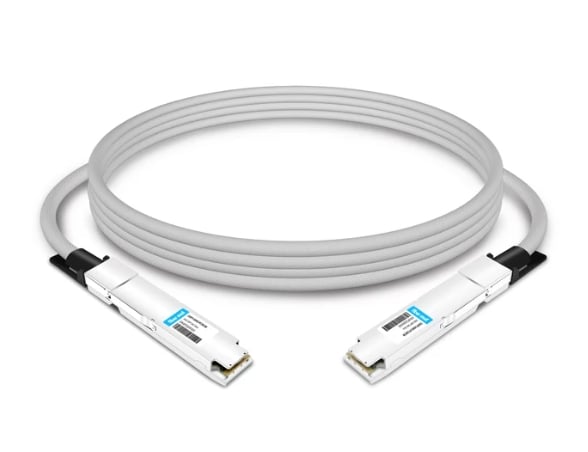
Data Center Applications
In data centers, OSFP cables are often used to interconnect network switches, routers, and servers at higher speeds. They have been designed with a capacity for 400G of data per second, which makes them great for bandwidth-hungry applications like cloud computing, virtualization, or big data analytics. But also, besides this usage case, they are used in high-performance computing environments where low latency is very important, along with fast data transfer rates as well. It does not matter how many jacks there are on the back of your device; all that matters is what kind you use- such as an SFP or QSFP module (or maybe even both!). This will enable cost-effective and efficient connectivity solutions within dense racks because passive DACs can be accommodated by OSFP technology, which works well in crowded spaces like those found inside cabinets filled with equipment – such places require lots of connections but do not need active electronics at each one.
Interconnect Solutions for High-Speed Networks
The OSFP (Octal Small Form-Factor Pluggable) connector is a robust interconnect solution for high-speed networks with data rates of up to 400G per port. These connectors were created for use in various network configurations so that they can provide fast data throughput for different types of applications. Here are some of the main specifications and features of OSFP interconnects:
- Data Rate: With a capacity to support 400G, OSFP is good for bandwidth-hungry tasks such as large-scale data center operations or high-performance computing among others.
- Pin Count: A total of 32 pins are incorporated into the OSFP interface which is an octal connection system allowing for more than one data lanes thus enhancing performance reliability on overall basis.
- Form Factor: The compact design enables it to fit well within crowded areas, thereby saving on space without compromising its efficiency.
- Compatibility: OSFP cables make use of both active and passive Direct Attach Copper (DAC) assemblies, which provides flexibility in terms of interconnection options while maintaining cost-effectiveness.
- Heat Dissipation: Unique design feature facilitates proper cooling down when heat is generated during heavy loads with data transmission under high-speed conditions – this helps maintain performance levels.
- Scalability and Modularity: Networking standards set by OSFPTechnology can accommodate future needs, allowing organizations to grow their network infrastructure along with business requirements.
These specifications demonstrate how flexible and capable OSFP interconnections can be used in today’s fast paced networks. By providing quick transfers as well strong links between devices, osfp cables should be able to address growing bandwidth demands which have become common in modern technology environments where everything requires faster speeds.
OSFP in Cloud Computing and Enterprise Networks
The interconnect solution for cloud computing and business networks, OSFP (Octal small form-factor pluggable) is very important especially when it comes to high-speed connectivity and data transfer. The reason why it is most preferred by cloud service providers that are looking forward to improving their capabilities in the data center is because of its support of 400G rates. Scalability becomes a reality within organizations as they adopt virtualization and multi-cloud strategies: this means that additional bandwidth can be integrated seamlessly without much infrastructure changes thanks to OSFP technology. Additionally, this is one among those few technologies that work well with both active direct attach copper assemblies or passive ones, thereby making it deployable anywhere cost-effectively, especially for large networks where cost is crucial. Last but not least, the effective dissipation heat feature, together with its small size, ensures that enterprise networks remain flexible enough while dealing with the current demand for storage and processing power, thus positioning itself as one of the fundamental elements behind modern networking architecture’s evolution.
How Do I Choose the Right OSFP Cable for My Needs?
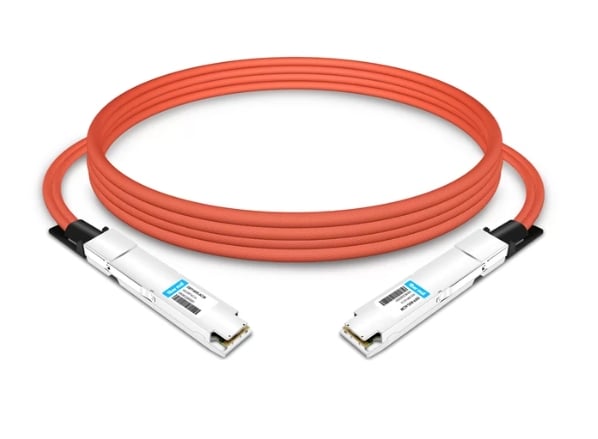
Factors to Consider When Selecting OSFP Cables
- Data Rate Requirements: Make sure the cable is capable of handling such data rates as 400G for OSFP applications.
- Length and Distance: Assess the deployment environment to determine the best length of cable while considering possible signal loss over distance.
- Connector Type: Ensure that it will work with existing network infrastructure, including switch and server ports.
- Cable Type: Performance needs and budget are considered in deciding whether to use active, passive or optic cables.
- Heat Dissipation: The cooling consequences of the installation must be looked into, especially in high-density environments.
- Cost Considerations: Compare performance requirements against budgets, searching for long-term reliability and performance value.
Evaluating Signal Integrity and Performance
Efficient network operations need to be evaluated based on signal integrity and overall performance. Higher attenuation may result in significant signal degradation across long distances; thus, the first thing to do is to look at this aspect of a cable. One can also use TDR (time domain reflectometer) or OTDR (optical time domain reflectometer), among other devices, to test the quality and locate possible faults or disruptions along a communication link. Additionally, return loss specifications should be considered, too, since higher values usually imply better performance in terms of minimizing signal reflections, which can interfere with data transmission. Finally, industry standards have to be met by any OSFP cables chosen; these may include IEEE and TIA guidelines that are used for ensuring reliability and performance in high-speed networking environments.
Ensuring Compatibility and Future-Proofing
Several considerations should be made to ensure that OSFP cables are installed in a networking environment. Review the current infrastructure, including switches and routers compatible with OSFP interfaces. This will prevent problems caused by incompatible technologies. Moreover, it is also important to select cables that meet or exceed the current industry standards so that they can work well with not only the existing equipment but also future developments in networking technology.
Another thing that must be done is to find out if there are any backward-compatible features for earlier Ethernet versions, such as 100G and 400G, in these wires, which would increase their usefulness as time passes by. The use of modular systems is highly recommended due to their scalability feature, thus making it easy for upgrading and expanding networks, which adds resilience to them, too. Also, people should always keep up-to-date with new trends like faster data rates or changing protocols because this helps a lot in planning for long-term investments in network infrastructures. Lastly, one should work closely with reliable suppliers who offer guarantees about durability and performance since this greatly contributes towards ensuring networks remain relevant even after many years have gone by.
What Are the Future Trends and Innovations in OSFP Technology?
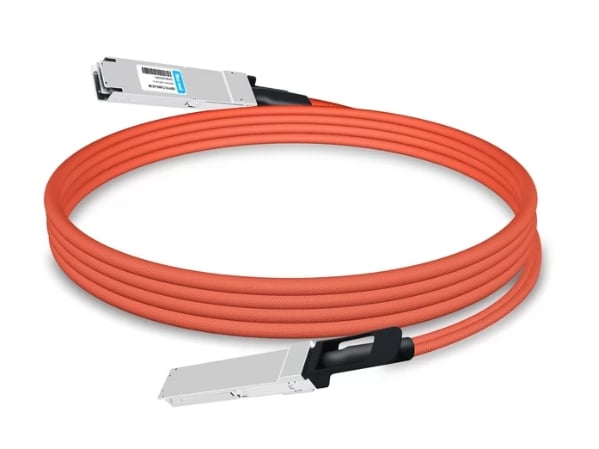
The Evolution Towards 800G
A notable step forward in high-speed networking is represented by the migration towards 800G technology. This change meets the need for more bandwidth that has been fueled by data-intensive applications like machine learning, artificial intelligence and cloud computing. For this transition to happen successfully, OSFP (Octal Small Form-factor Pluggable) designs need to be improved so that they can handle larger amounts of data while still being power efficient and heat manageable. There are several developments around optics, such as multi-wavelength systems and advanced modulation techniques, which greatly contribute to achieving 800G performance levels; this is because they enable faster speeds over longer distances with less signal degradation, among other benefits. Furthermore, at these higher speeds, it becomes necessary to have better error correction methods together with smarter network management solutions if we are going to uphold this data integrity and reliability.
Next-Generation Performance in Passive Copper Cables
The following generation involving unaggressive water piping cords is being created to accommodate the rising requirements of high-speed file sign, particularly in information core surroundings. These kinds of cabling usually use sophisticated manufacturing strategies and materials, for example quality copper along with increased insulation, that increases signal strength and also lowers attenuation above lengthier distances. Improved models, just like those people adding twisted-pair designs, help to reduce electromagnetic interference (EMI) as well as crosstalk, further endorsing reliable overall performance. Furthermore, innovations throughout connection technologies, which include enhanced locking mechanisms and reduced insertion loss, are critical for ensuring optimal connectivity in high-density applications. As a result, these types of efficiency improvements are crucial for supporting the particular move towards 800G plus much more in dealing with the needs associated with contemporary data-intensive apps while preserving cost-efficiency as well as simplicity of installation.
Emerging Standards and Industry Developments
Continuous improvement of bandwidth and enhanced interoperability are the main goals of new standards and developments in the world of high-speed data transmission. The Institute of Electrical and Electronics Engineers (IEEE) is leading the way with programs such as IEEE 802.3ck, which establishes guidelines for 100GbE over passive copper cables, among other media types. Category 8 standards are also being revised by the Telecommunications Industry Association (TIA) to support new applications like 25GbE and 40GbE while maintaining compatibility with current infrastructure; meanwhile, optical interconnects are seeing progress through groups like the Optical Internetworking Forum (OIF), who focus on interoperability and integration between different optical technologies that will be necessary for enabling 800G networks. These joint efforts among various industry bodies not only improve performance measures but also help ensure that emerging technology aligns well with existing deployments so as to ease adoption into next-gen networking solutions.
Reference Sources
Frequently Asked Questions (FAQs)
Q: What is an OSFP cable assembly?
A: An OSFP (Octal Small Form Factor Pluggable) cable assembly is a high-speed data interconnect that can support transmission rates of up to 112G in data centers and high-performance computing environments, among other places. These are necessary for reliable and efficient communication of information.
Q: How does an OSFP 400G passive direct attach cable work?
A: An OSFP 400G passive direct attach cable works by connecting data hardware directly, without the use of active components like amplifiers or signal conditioners. It provides a cost-effective solution for fast connectivity between devices at 400 gigabit Ethernet speeds.
Q: What are the advantages of using OSFP 112G cables?
A: The benefits of using OSFP 112G cables include higher data rates, low latency, and excellent signal integrity, which makes them perfect for any application where there is a need for fast and reliable performance in data transmission.
Q: What does it mean when we talk about 400G QSFP-DDs in relation to data centers?
A: The reason why the term “400G QSFP-DD” is important within this context stems from its ability to allow greater amounts of information through systems at quicker rates; this ultimately leads to more efficient processing times on networks as well as increased bandwidth capacities being handled by different centers simultaneously.
Q: What sets apart passive copper cable assemblies from their active counterparts?
A: A passive copper cable assembly doesn’t need external power or active components because they just transmit raw signals without any form of amplification while still being able to cover relatively short distances. This means that such connections are cheaper since no extra equipment needs purchasing but also greener since less electricity gets consumed during operation compared with an active one where electronic elements have been integrated into a design, thus boosting signal strength over longer spans though usually costing more too.
Q: What should I look for in qualified passive copper cables?
A: In selecting qualified passive copper cables, one should take note of certain attributes that include but are not limited to the following: high data rate capabilities (such as 112G), low latency, robust shielding as well as flexibility and compatibility with current network hardware; all these features work together to guarantee next-generation performance which is both reliable and efficient.
Q: Where can I buy OSFP cables?
A: OSFP cables can be bought from different suppliers who deal with items related to data centers and networks. Amphenol Cables on Demand is an example of a company that has various types (including assemblies) of OSFP products designed to meet different connectivity requirements using passive copper cable.
Q: What are some applications that benefit from using OSFP 400G cables?
A: Some applications that benefit from utilizing OSFP 400G cables include HPC (high-performance computing), cloud DCs (data centers), and Infiniband networks, among others, where there is a need for higher data transfer rates together with reliable performance during large-scale data processing and transmission.
Q: How does passivity in copper provide next-gen performance?
A: Passive Copper Cables provide next-gen performances by combining higher data rate capabilities with lower latency periods coupled with stronger build materials around them; these ensure the safe delivery of information packets across networks, thereby saving time and making them more effective than ever before, especially when comes down to modern-day demands placed upon such facilities like computer rooms or server farms within organizations dealing heavily with digital communication systems.
Q: What factors do I need to consider when purchasing OSFP products?
A: Considerations must be made about what type(s) of application(s) will be used, requiring speeds beyond those offered by current technology; this may necessitate upgrades. Therefore, any chosen solution should meet both your budget constraints as well as network performance expectations.
Related Products:
-
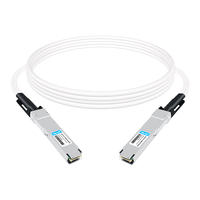 OSFP-FLT-400G-PC50CM 0.5m (1.6ft) 400G NDR OSFP to OSFP PAM4 Passive Direct Attached Cable, Flat top on one end and Flat top on other
$110.00
OSFP-FLT-400G-PC50CM 0.5m (1.6ft) 400G NDR OSFP to OSFP PAM4 Passive Direct Attached Cable, Flat top on one end and Flat top on other
$110.00
-
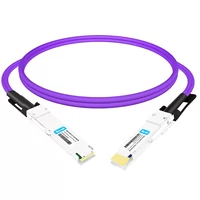 QDD-OSFP-FLT-AEC50CM 0.5m (1.6ft) 400G QSFP-DD to OSFP Flat Top PAM4 Active Electrical Copper Cable
$1200.00
QDD-OSFP-FLT-AEC50CM 0.5m (1.6ft) 400G QSFP-DD to OSFP Flat Top PAM4 Active Electrical Copper Cable
$1200.00
-
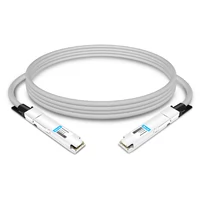 OSFP-800G-PC50CM 0.5m (1.6ft) 800G Twin-port 2x400G OSFP to 2x400G OSFP InfiniBand NDR Passive Direct Attach Copper Cable
$105.00
OSFP-800G-PC50CM 0.5m (1.6ft) 800G Twin-port 2x400G OSFP to 2x400G OSFP InfiniBand NDR Passive Direct Attach Copper Cable
$105.00
-
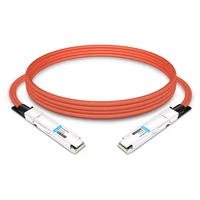 OSFP-800G-AC3M 3m (10ft) 800G Twin-port 2x400G OSFP to 2x400G OSFP InfiniBand NDR Active Copper Cable
$600.00
OSFP-800G-AC3M 3m (10ft) 800G Twin-port 2x400G OSFP to 2x400G OSFP InfiniBand NDR Active Copper Cable
$600.00
-
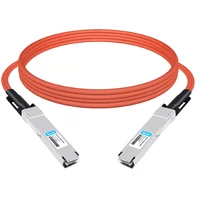 OSFP-FLT-800G-AC3M 3m (10ft) 800G Twin-port 2x400G OSFP to 2x400G OSFP InfiniBand NDR Active Copper Cable, Flat top on one end and Flat top on the other
$600.00
OSFP-FLT-800G-AC3M 3m (10ft) 800G Twin-port 2x400G OSFP to 2x400G OSFP InfiniBand NDR Active Copper Cable, Flat top on one end and Flat top on the other
$600.00
-
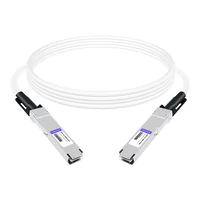 OSFP-FLT-800G-PC2M 2m (7ft) 2x400G OSFP to 2x400G OSFP PAM4 InfiniBand NDR Passive Direct Attached Cable, Flat top on one end and Flat top on the other
$300.00
OSFP-FLT-800G-PC2M 2m (7ft) 2x400G OSFP to 2x400G OSFP PAM4 InfiniBand NDR Passive Direct Attached Cable, Flat top on one end and Flat top on the other
$300.00
